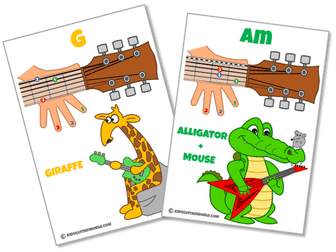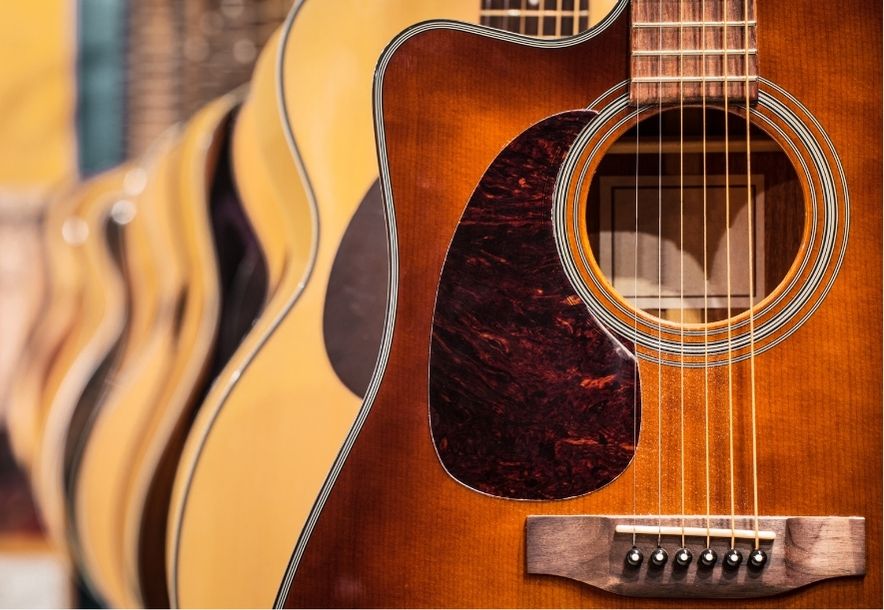
Acoustic guitars are a type of guitar, but certainly one of the most sold on the market. However, not every type of guitar is the best choice for kids, especially when they are just starting out. In this article, we’re going to find out what acoustic guitars actually are, how they differ from the other guitar types, and if acoustic guitars in general a good choice for kids. We will also recommend some models in different sizes that we think are worth checking out.
What is an acoustic Guitar
Acoustic guitars are hollow body instruments without electric amplification. The wood is a very important concern for acoustic guitars because it produces the sounds. The top of quality guitars is usually made of spruce or cedar. Because these woods are light but tightly grained, they increase the top’s ability to vibrate and serve as a sound source much more efficiently than the strings themselves. When you pluck or strum the strings, the vibrating strings transfer energy to this top plate. Rosewood is often used to make the back and sides of a guitar because it’s very hard and tends to contribute to a brighter sound.
Acoustic guitars come with steel strings. There are also guitars with nylon strings, but this type of guitar is called a classical guitar. So when you hear about acoustic guitar, it always refers to the one with steel strings. The steel string guitar is actually a descendant of the classical guitar. They come in a variety of slightly different shapes such as dreadnought, grand concert, jumbo, etc. and are the most popular type of acoustic guitar.
Are Acoustic Guitars a good Choice for Children?
Steel string guitars have a louder and brighter sound. The first two strings are made of a single metal. If your child is not used to steel strings, this can be a bit uncomfortable and painful for their fingertips at first. They should only play for a short time each day until they get used to it. If your child is already playing the guitar and needs to move up to the next size, don’t worry. His fingers are already used to guitar strings and he won’t have any pain. But if it’s his first guitar, you should be aware of this little discomfort at the beginning.
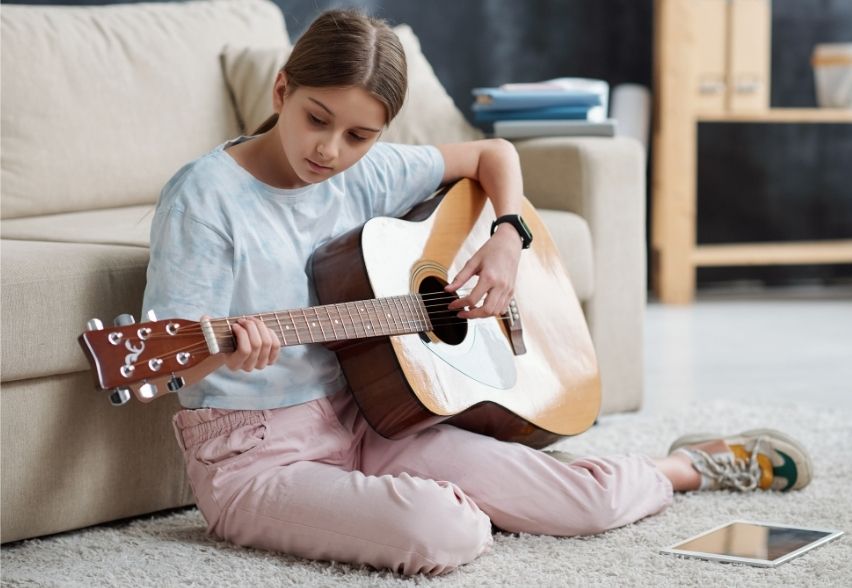
In addition, acoustic guitars have a higher action (distance between the strings and the neck) and kids have to press down harder on the strings, which can cause hand cramps. Once you have some calluses on your fingertips, pressing down on a steel string won’t be a big problem for you. However, it’s a fact to consider with young children, as they may give up sooner if they don’t feel comfortable with the instrument right from the start. That’s why I don’t think steel string guitars are the best choice for too young children.
Choosing a nylon string guitar can be an easier introduction to playing an acoustic. I would only consider a steel string guitar as an option for children 8 years and older.
Best acoustic Guitar for Kids
There are many different models of acoustic guitars on the market. However, most of them are full size guitars. And if you are buying a guitar for a child, you will probably need a smaller size guitar. This depends on your child’s height, as a good should fit like a pair of shoes. Check out our article on guitar sizes if you’re not sure what size you need for your child.
Small Size Acoustic Guitars
Small size acoustic guitars are available in the sizes 1/4, 1/2 and 3/4. But when it comes to these sizes, you won’t find models from the big guitar brands, except for 3/4 size guitars, as this is also a size that adults like as a travel guitar. Pyle is one of the brands that offers steel string acoustic guitars in different sizes.

– equipped with equalizer
– solid quality and workmanship
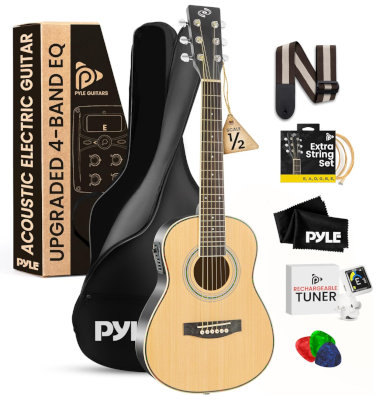
– great value for money
– some accessories already incl.
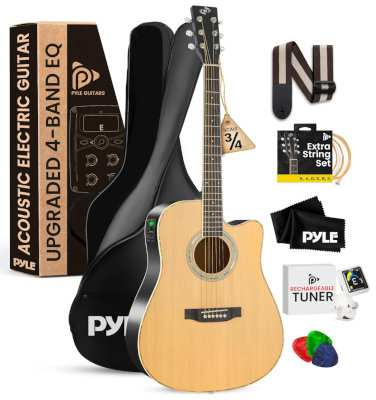
– some accessories already incl.
– available in many different colors
Full Size Acoustic Guitars
If your child needs a full-size acoustic guitar, you have a lot of choices. There are almost endless options for you! From very cheap guitars around $100 to very high quality guitars that can cost well over $1000. However, a beginner doesn’t need the best and most expensive acoustic guitar to get started. A beginner needs a solid guitar that is comfortable to play and has a nice sound. Here are some models we recommend for beginners.
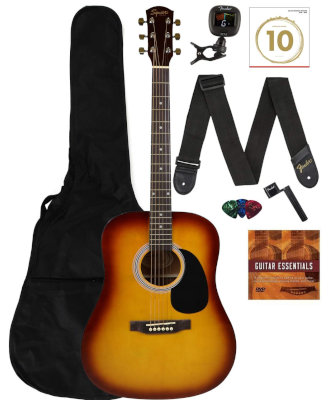
– some accessories already incl.
– solid quality and good sound
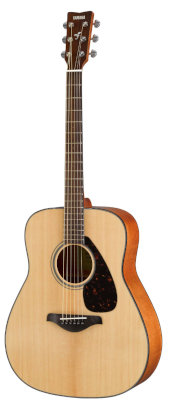
– solid spruce top
– good quality and finish
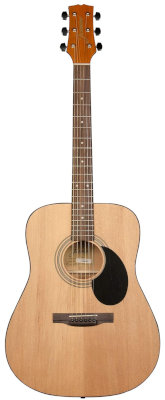
– available in different colors
– solid quality and finish


